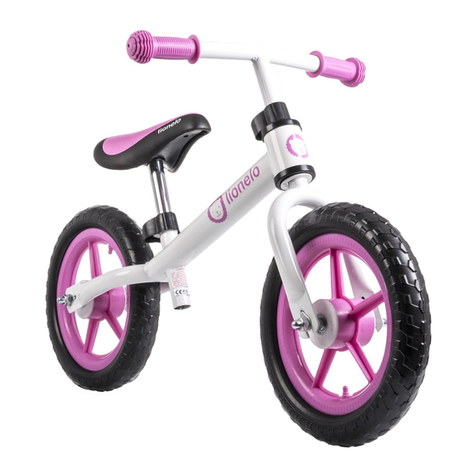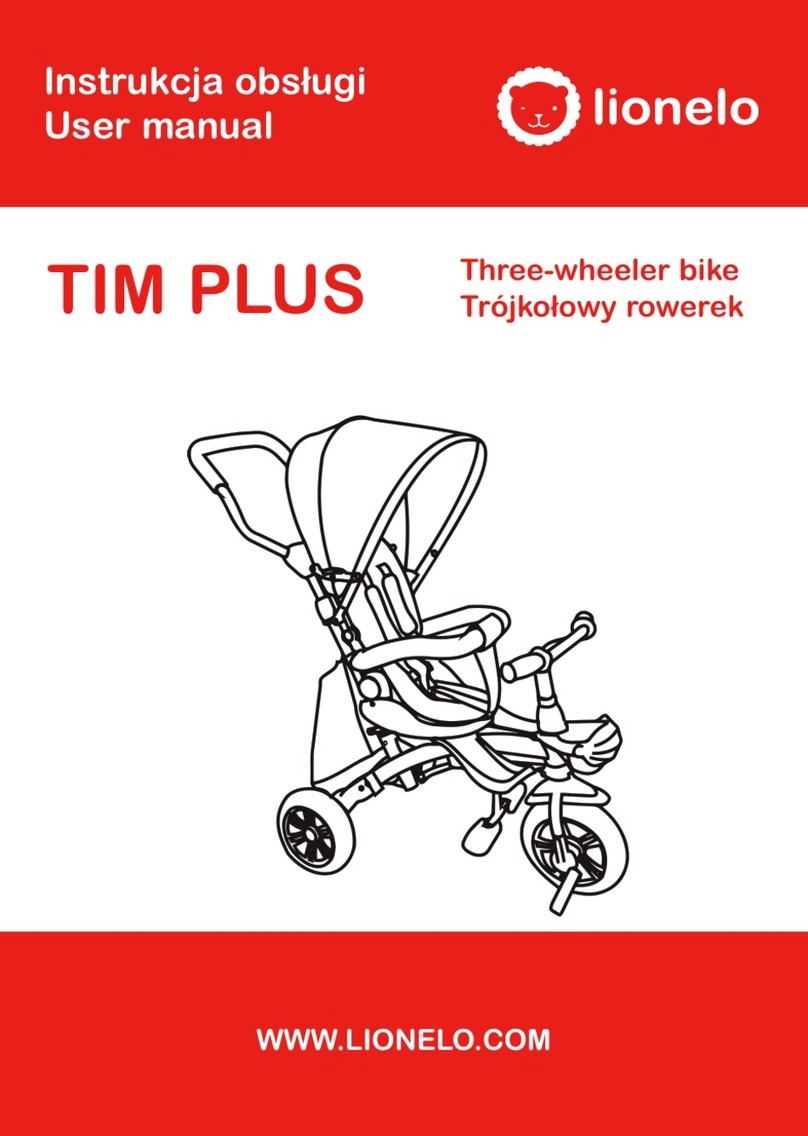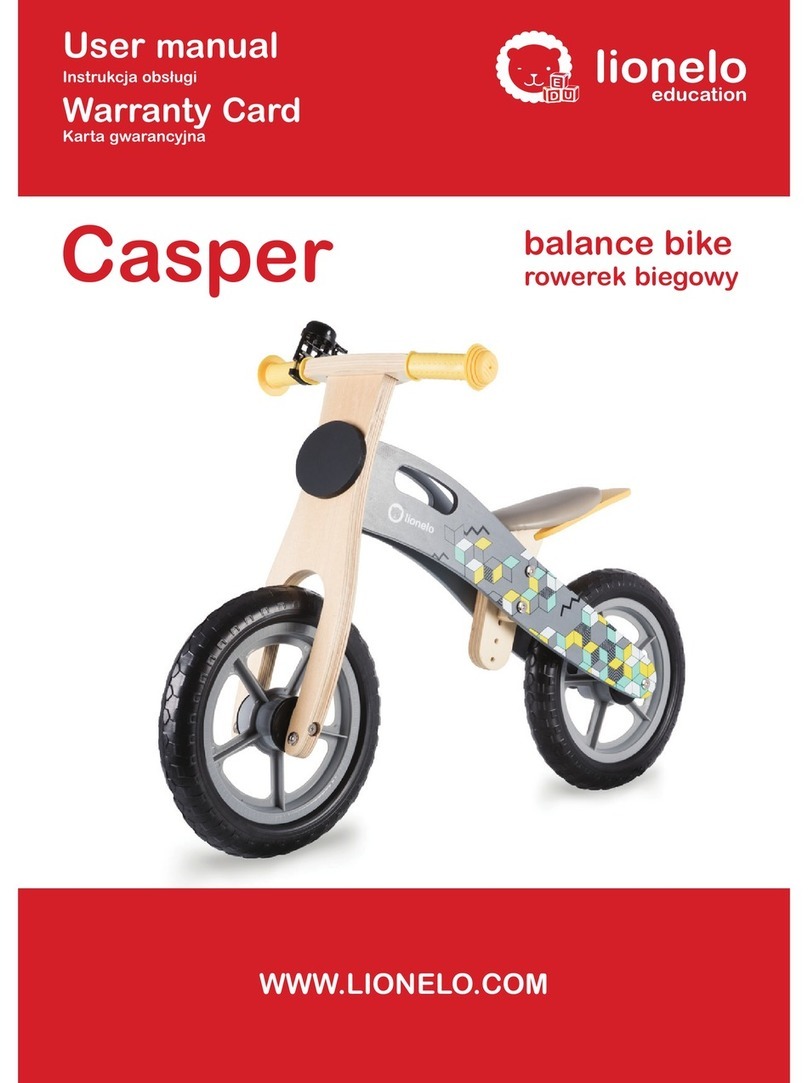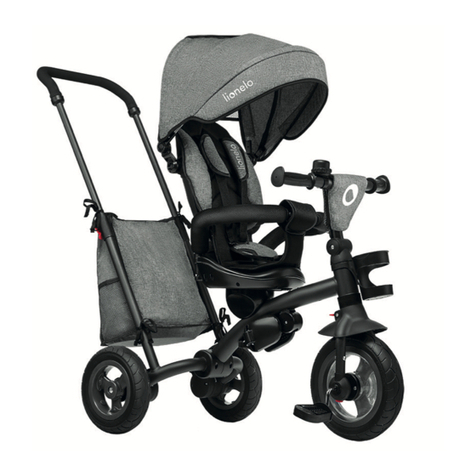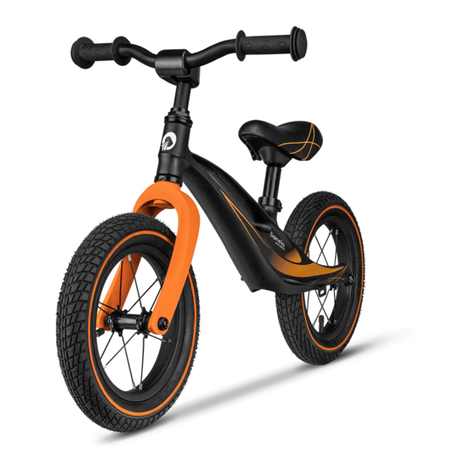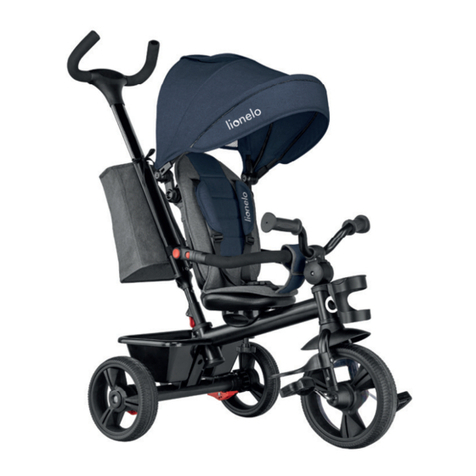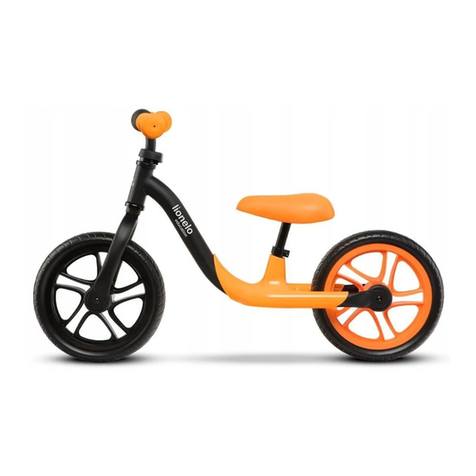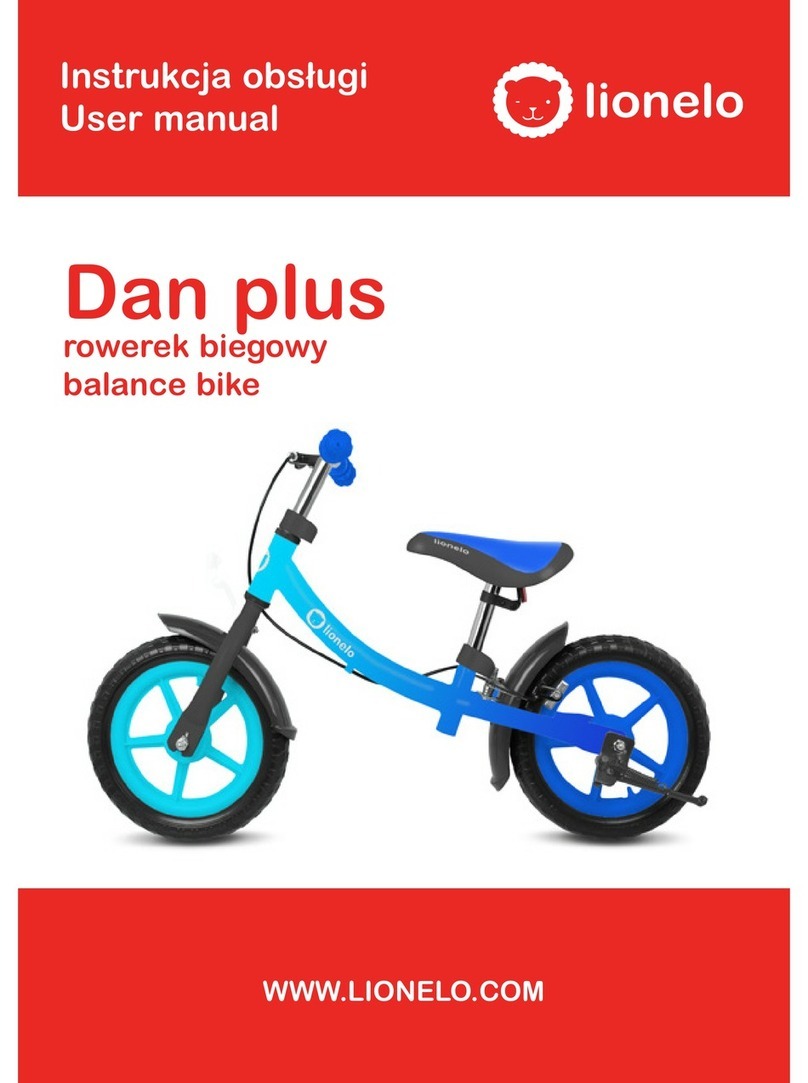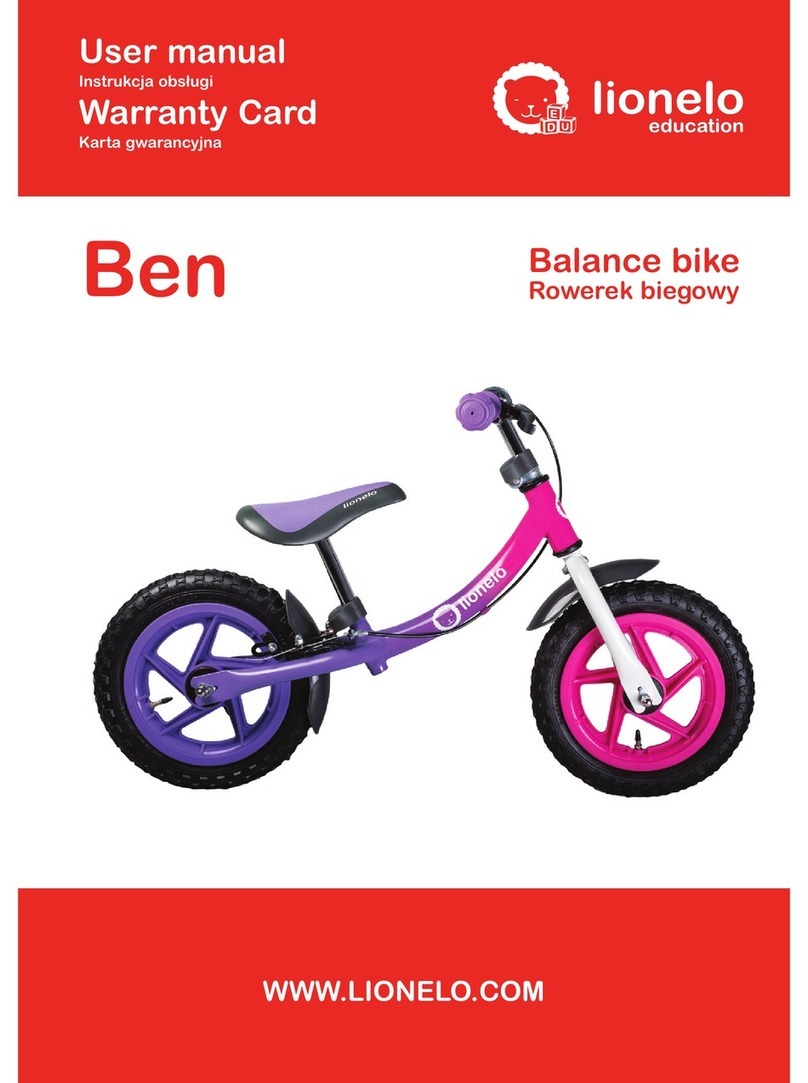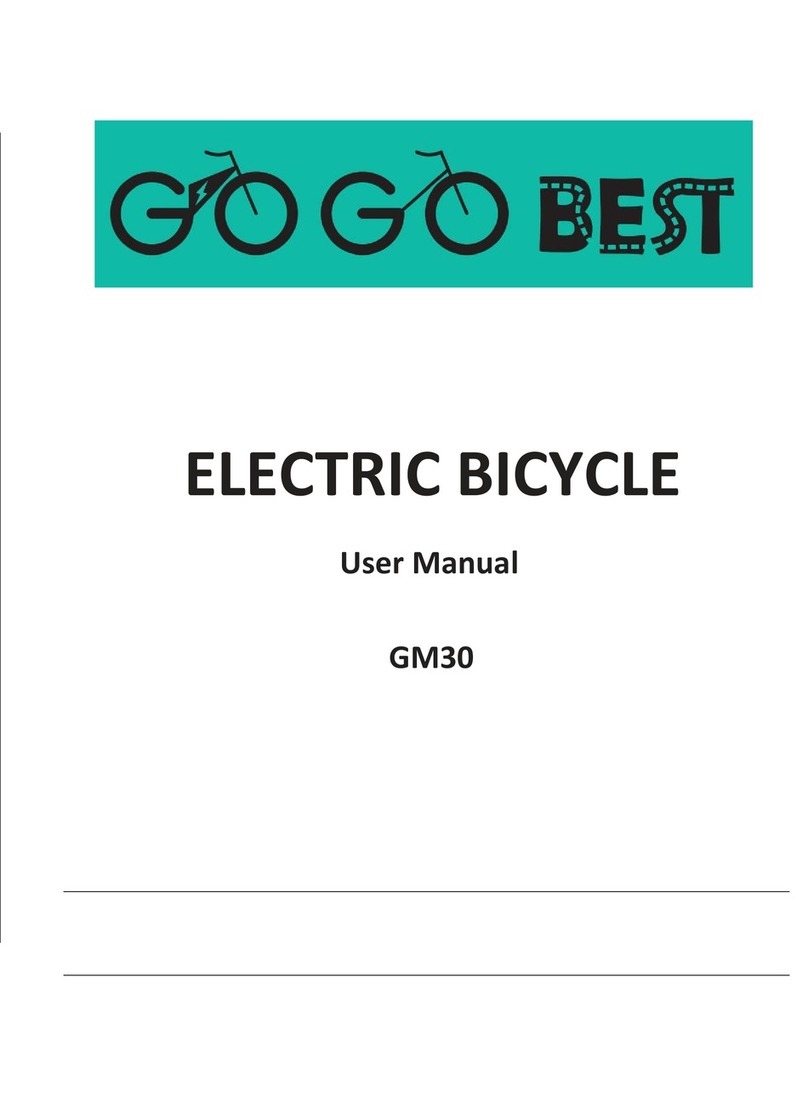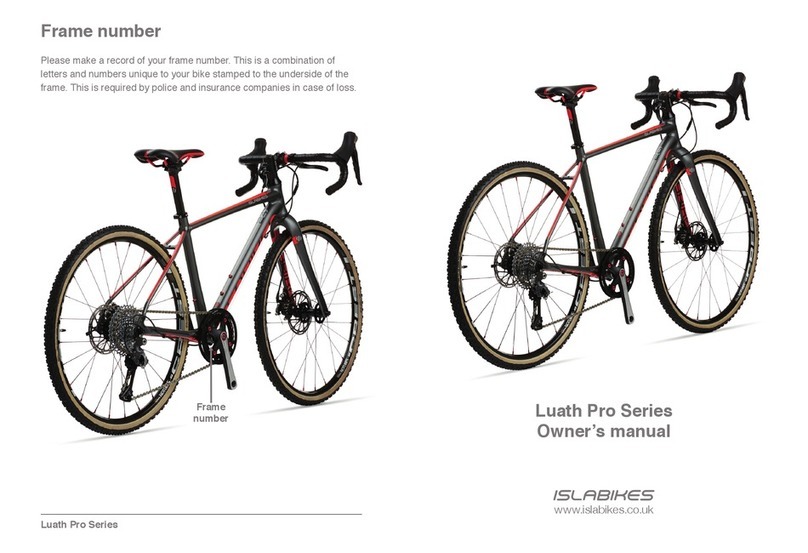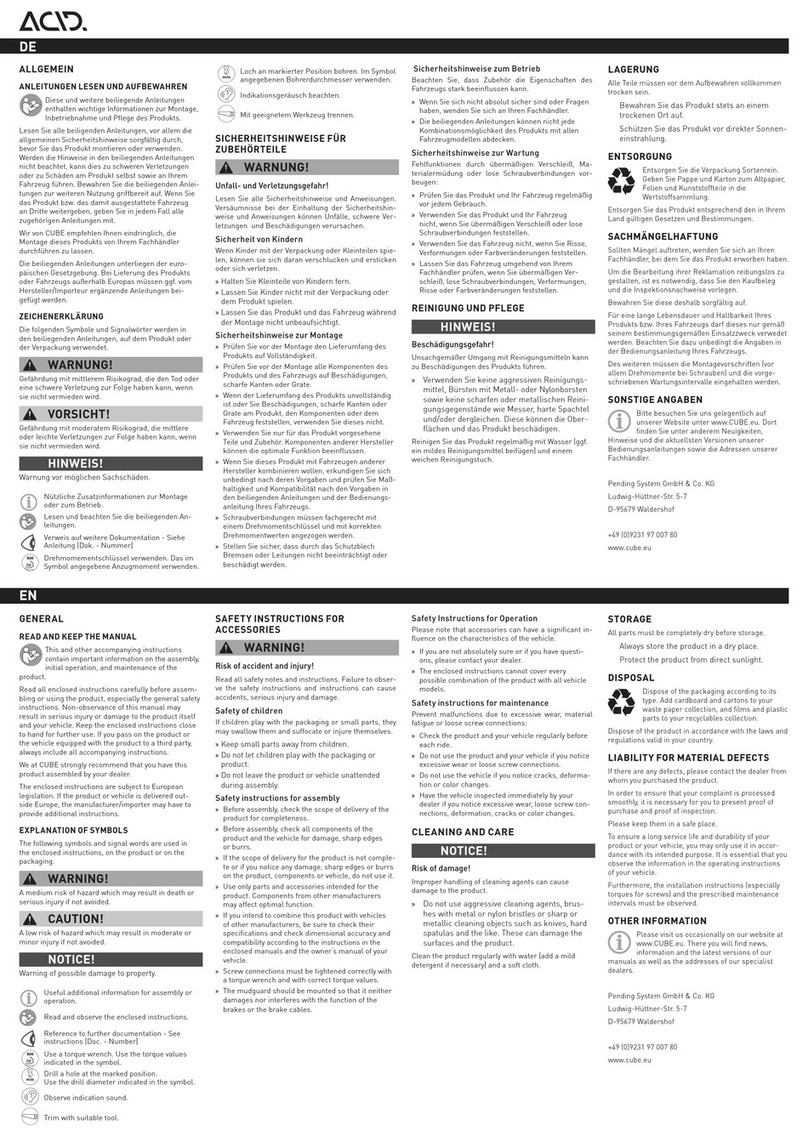
‑ 10 ‑DE
des Vorderrads (14) vor der vorderen Gabel (4). Setzen Sie vordere Gabel mit
dem Rad in die Önung am Rahmen des Laufrads. Setzen Sie wieder auf eine
Scha der Gabel in folgender Reihe auf: Aufsatz der Gabel des Vorderrads (14)
und Befesgungsschelle für das Lenker (10). Lockern Sie die Muer an Befes-
gungsschelle (14) und stecken Sie den Lenker (2) in vordere Gabel des Laufrads
ein. Passen Sie die Höhe des Lenkers an die Größe des Kindes an, das mit dem
Laufrad fährt - Sicherheitsmarkierung unter dem Sael (9) kann nicht sichtbar
sein, sie muss sich im Inneren des Rahmens benden. Ziehen Sie fest die Muer
an der Befesgungsschelle (14) an und decken Sie diese mit einem Abdeck-
ansch (8) ab. Nach Beendigung des Prozesses prüfen Sie, ob der Sael stabil
befesgt wird. In einem anderen Fall, ziehen Sie die Muer an der Schelle fester
an, bis die erforderliche Stabilität erzielt wird.
Achtung! Bei der Montage prüfen Sie, ob vordere Gabel mit dem Rad am
Rahmen richg monert ist. Das Laufrad soll nur durch eine erwachsene Per-
son monert, demonert und eingestellt werden.
2. Sael (Abb. 3).
Stecken Sie das Sitzrohr in die Önung für den Sael am Rahmen (12) ein. Pas-
sen Sie die Höhe des Saels an die Größe des Kindes an, das mit dem Laufrad
fährt – Tiefmarkierung der Befesgungslöcher für die Sitzmontage (11) kann
nicht sichtbar sein, sie muss sich im Inneren des Rahmens benden. Ziehen Sie
die Muer an der Befesgungsschelle des Saels (13) an. Nach Beendigung des
Prozesses prüfen Sie, ob der Sael stabil befesgt wird. In einem anderen Fall,
ziehen Sie die Muer an der Schelle fester an, bis die erforderliche Stabilität
erzielt wird.
3. Bremse (Abb. 4 und 5)
Vor dem Gebrauch des Laufrads prüfen Sie, ob die Bremse richg eingestellt
wurde. Abschrauben der inneren Muer verursacht Spannen der Bremsseile.
Man soll die äußere Muer (laut Abb. 4) zuschrauben.
Zuschrauben der Einstellschraube verursacht, dass der Handbremsgri sich an
Lenker nähert und Spannen der Bremsseile (Abb. 5) verstärkt.
Gebrauch
Man soll sich auf dem Sael setzen, fest die beiden Fahrradgrie greifen und sich mit den
Füßen abwechselnd vom Boden abstoßen. Nachdem das Laufrad in Fahrt kommt, soll
man die Füße heben, um bequem zu fahren. Auf diese Weise soll das Kind lernen, wie im
Gleichgewicht zu bleiben. Das Abbiegen erfolgt durch Drehen des Lenkers in Abbiegerich-
